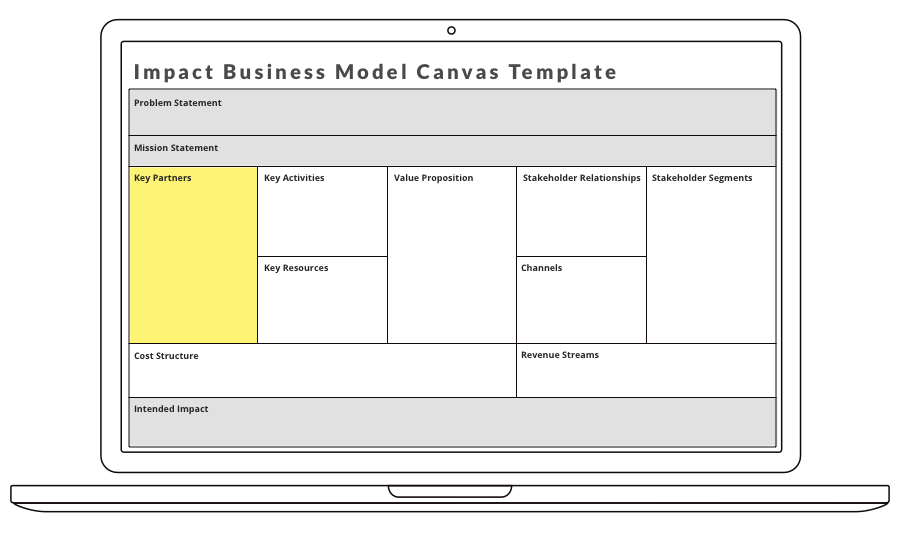
9 | Key Partners

Key Partners highlighted on the canvas
Companies forge partnerships for many reasons, and partnerships are becoming a cornerstone of many business models. Companies create alliances to optimize their business models (e.g., reduce costs), reduce risk (e.g., jointly develop a technology),or acquire resources (e.g., license IP). We can distinguish between four different types of partnerships: strategic alliances between non-competitors, strategic alliances between competitors (coopetition), joint ventures to develop new businesses, and buyer-supplier relationships to assure reliable supplies.
Partnerships can support and enhance both the commercial and the impact objectives of a social enterprise. There may be different motivations for engaging in partnerships according to whether the partnership is centered on commerce, impact, or both. Potential motivations for impact partnerships in a social enterprise include: scaling/maximizing impact, ensuring and measuring delivery of impact, and optimising economies of scale and scope in relation to impact.
Key partners:
d.light sells solar energy solutions to populations without electricity in 60+ nations. See project description and its Impact BMC
Key partners:
Equal Opportunity Schools helps minority and low-income high school students succeed in AP and IB courses. See project description and its Impact BMC